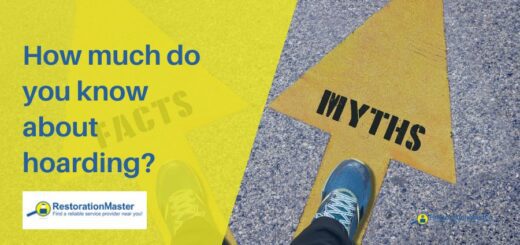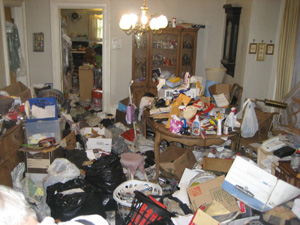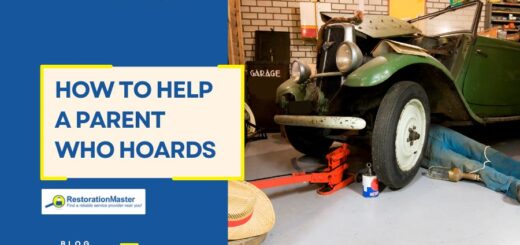Why Hoarding Worsens with Age
According to recent research, hoarding behaviors can start as young as mid-30s, worsening with age, and leaves 70% of these individuals in their 70s affected by the disorder. According to the University of California, San Francisco, hoarding behaviors affect 15% of all elderly individuals with depression, and 2-3% of those without. Those affected by hoarding will hold onto everything, including their child’s homework assignments and papers, and the collection of numerous items without value occurs because of a difficulty discarding them.
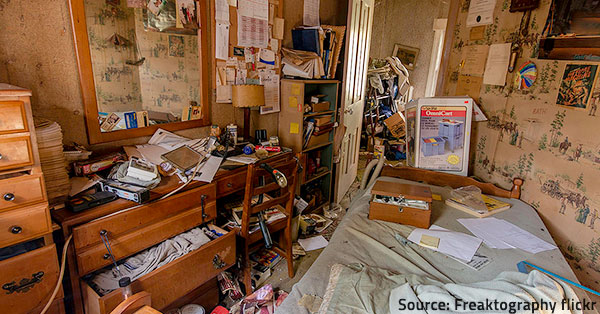
Individuals affected by hoarding will collect many items without organizing them in their home. As the problem grows, it prevents the individual from doing everyday activities, such as cooking, cleaning, bathing, etc.
In the past, it was thought that hoarding was associated with obsessive compulsive disorder, or OCD, but treatments that have worked on these patients proves to be ineffective with those affected by hoarding.
How Hoarding Worsens with Age
The primary reason hoarding worsens with age is that the behavior is linked to a mental decline as they find it increasingly difficult to make decisions. Brain scans have also shown that the parts responsible for decision-making, emotions, attention, and organization are abnormal. Hoarding behaviors are also hereditary.
Other research has shown that seniors face a significant decline in the amount and frequency of social interactions, leaving them feeling lonely. As a result, they may start to behave in ways that help them combat feelings of isolation and depression, collecting everything from animals to newspapers.
Items Collected by Hoarders
 Those affected by hoarding will collect just about anything, depending on their interests. Many will opt for clothes, books, newspapers, paintings, and accessories, but others will collect invaluable items. These include empty cans, garbage, grass cuttings, and receipts; simply garbage.
Those affected by hoarding will collect just about anything, depending on their interests. Many will opt for clothes, books, newspapers, paintings, and accessories, but others will collect invaluable items. These include empty cans, garbage, grass cuttings, and receipts; simply garbage.
While it’s natural to have a little clutter around the house, there comes a time when one feels it’s too cluttered, and they purge their items. But in the case of hoarders, they become anxious when faced with the idea of ridding themselves of their belongings. So, it grows to get out of hand, eventually to the point of creating safety hazards throughout the home, such as moldMold is a type of fungus that grows in damp or humid conditi... More, fire hazards, slip-and-trip hazards, and much more.
Despite these threats to their safety, hoarders don’t often see this as an issue. They become accustomed to their situation that they are willing to live in a dangerous situation to avoid facing the stress of throwing their items away.
According to a study published by Michigan University, those who hoard will often attach human-like qualities to their items, feeling afraid to get rid of them because they feel safe around them.
Hoarding and Depression
Hoarding and depression are connected in such a way that they both affect the frontal lobe of the brain, the area responsible for organizing and arranging items.
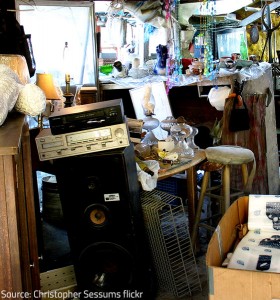 In the past, it was thought that only .5% of the population was affected by hoarding, but that was because it was largely considered a symptom of OCD.
In the past, it was thought that only .5% of the population was affected by hoarding, but that was because it was largely considered a symptom of OCD.
As hoarding behaviors become more prevalent as people age, the highest rates of hoarding have been seen in individuals over the age of 65. Research has also showing that almost 43% of hoarders have depression and have been put on anti-depressants with some success.
Teaching positive thoughts and “normal” patterns have also helped, such as emptying the garbage, clearing the kitchen table, and throwing away items from their refrigerator, and others that focus on the habit of throwing things away.
Treating Hoarding Behavior
The key to treating hoarding behavior is to bring in the help of a loved one, one whom they know and trust. This allows them to be more accepting of removing their items from their home as they know their loved one has their best interests in mind.
While it can be embarrassing for the individual to allow their loved one to see their situation, they must overcome this feeling to accept help and restore their home to a safe living environment. While some cases may involve hostility, depending on the loved one and hoarder, this is still the best form of treatment.
Once they are ready to organize and remove their items from the home, they must feel like they are in control: nothing is thrown away without their permission. This will allow them to feel respected and understand that everyone is there to support them. While it does take time to clean out a home, the individual should have a clean home, somewhat clear of clutter, but fully sanitized, free of moldMold is a type of fungus that grows in damp or humid conditi... More and other biohazards that put their personal health at risk.
Hoarding Cleanup Services
 While there are many house cleaning services, hoarding cleanup will require a different type of cleaning, one that involves a trained and licensed crew to work with the individual affected by hoarding. They must know to treat the individual with compassion and respect in order to conduct the service.
While there are many house cleaning services, hoarding cleanup will require a different type of cleaning, one that involves a trained and licensed crew to work with the individual affected by hoarding. They must know to treat the individual with compassion and respect in order to conduct the service.
After reaching out to your loved one about your concern for their safety and they have accepted help, you can look for a professional. Be cautious when researching hoarding cleanup services. They must not only be trained and experienced, but also willing to work with your loved one and put them in charge of the cleaning process, otherwise nothing will get done.
Trustworthy hoarding cleanup professionals will also provide moldMold is a type of fungus that grows in damp or humid conditi... More removal and biohazard cleanup services as well as structural repairs so you don’t have to worry about working with multiple companies. These technicians will have years of experience working with hoarders and will ensure to restore a safe and healthy living condition to your loved one’s home.
Finally, they will check in with your loved one to ensure the home stays clean. If not, follow up appointments can be made. They will also work with their insurance adjuster during the claims process if necessary. This way, you can ensure that your loved one will have a clean and sanitary home while feeling motivated to keep it in this condition.










